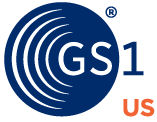Fresh Foods
Enabling supply chain visibility for improved traceability and food safety
Faced with increasing demands for efficiency, companies in the fresh foods industry are turning to GS1 Standards to help streamline business processes and increase supply chain visibility.
Benefits of unique product and location identification and standardized data exchanges include:
- Enhanced traceability and preparedness for fast, precise recalls
- Improved inventory management and product availability
- Streamlined shipping/receiving and efficient order-to-cash processes
Learn more about how industry stakeholders are collaborating in retail grocery and foodservice initiatives to unlock the power of GS1 Standards. You can also view additional information about category-specific efforts.
Companies in the meat and poultry industry are using GS1 Standards to improve product tracing in support of food safety and supply chain efficiencies. These include improved inventory management, streamlined distribution processes, and enhanced information sharing with trading partners and consumers.
The Traceability for Meat & Poultry U.S. Implementation Guide developed by industry stakeholders provides guidance to develop and adopt business processes for product traceability leveraging GS1 Standards. Download PDF guide
Additional resources:
- Model for the Adoption of Critical Tracking Events in the Meat & Poultry Supply Chain provides guidance for the adoption of critical tracking event and key data element methodology for food product traceability in the supply chain. Download PDF
- Implementation Guide for GDSN® Data Alignment of Meat & Poultry Trade Items supports companies seeking to electronically synchronize meat and poultry product information in accordance with GS1 Standards. Download PDF
- GDSN® Trade Item Attributes document provides guidance for exchanging product data via the Global Data Synchronization Network™. Download PDF
- GS1 US X12 EDI Implementation Guidance for USDA Country of Origin Labeling (COOL) Requirements provides guidance on information needed for COOL labels. Download PDF
- EDI Implementation Documents available in our Solutions Center for meat and poultry. View documents (myGS1 US login required)
Learn more by visiting our Education and Training page, our Resource Library, or by contacting us at retailgrocery@gs1us.org or foodservice@gs1us.org.
Produce growers, packers, and shippers are increasingly using unique product identification and case-level traceability to enhance food safety and operational efficiencies. Along with their trading partners, they are leveraging GS1 Standards to enable fast, precise recalls while also gaining additional benefits from improved inventory management, as well as streamlined shipping and receiving processes.
Produce Traceability Initiative
The Produce Traceability Initiative (PTI) is the most wide-reaching industry effort in the produce sector, offering tools and resources for the adoption and implementation of GS1 Standards. The goal of PTI is to help the industry achieve supply chain-wide adoption of electronic traceability for every case of produce. View PTI page
Additional resources:
The GS1 DataBar® is a point-of-sale barcode that enables tagging of small, hard-to-mark consumer goods like fresh foods and loose produce. In a much smaller space, the GS1 DataBar carries the same information as the standard U.P.C. barcode.
- Download How to Build a GS1 GTIN into a GS1 DataBar for Produce PDF (101 KB)
- Download How to Build a GS1 GTIN into a GS1-128 for Produce PDF (101 KB)
Transitioning from a generic U.P.C. to a brand owner-specific U.P.C.?
Learn more by visiting our Education and Training page, our Resource Library, or by contacting us at retailgrocery@gs1us.org or foodservice@gs1us.org.
The seafood industry is using GS1 Standards to enhance supply chain visibility for improved business processes and enhanced food safety. By implementing effective traceability programs, companies can conduct fast, precise recalls. In addition, they are unlocking greater value from the use of standardized product and location information.
The Seafood Traceability Implementation Guide, developed by the National Fisheries Institute (NFI), GS1 US, and U.S. seafood industry stakeholders, provides practical guidance for industry-wide seafood traceability.
Highlights include:
- Voluntary minimum requirements and best practices to share information among seafood distribution channel participants
- Global Trade Item Number® (unique identification) management, use of batch/lot numbers and the potential for case serial numbers, and data encoding and capture recommendations
- Traceability principles across the product hierarchy
- Best practices for maintaining traceability throughout the seafood supply chain.
Other key resources:
- Seafood Traceability Proof of Concept Project Overview makes a case for implementing GS1 Standards for traceability with a focus on capturing key data elements at critical tracking events along the seafood supply chain.
Learn more by visiting our Education and Training page, our Resource Library, or by contacting us at retailgrocery@gs1us.org or foodservice@gs1us.org.
The Food and Drug Administration's Food Safety Modernization Act (FSMA) is expected to affect all fresh food categories. Read GS1 US’ comments to FDA on IFT traceability recommendations in support of FSMA.
-
Fresh Foods Management Solution
5 Steps to improved traceability and related benefits
- Quiz: What is Your Trace Ability?
- Explore Benefits of GS1 Standards in Supply Chain
- Learn About Critical Tracking Events
- Apply best practices to GS1-128 barcode implementation
- Take the GS1 Standards for Traceability Online Certificate Course


